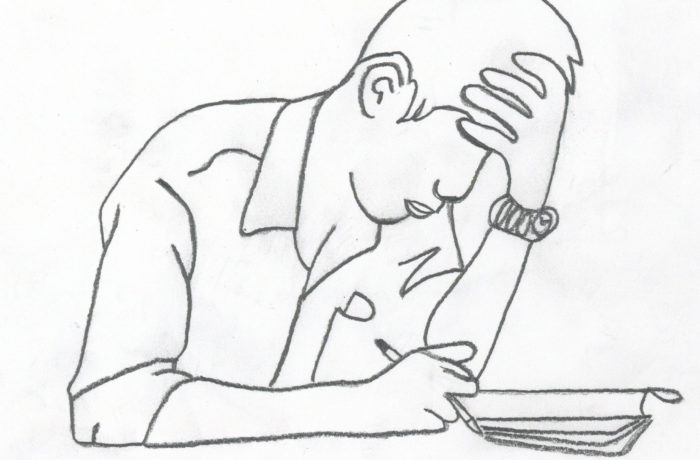By Corinne Duffy
Some days are good days, and other days, for Ellie Broadbent, her anxiety is so difficult that she struggles to make it to her classes. “The problem is I’ll be on my way to class and then all of a sudden I’ll freak out and not be able to go to class,” said Broadbent ’20. “It’ll make it hard me to actually get to a class, I’ll just get super overwhelmed. Before I even sit down I can’t focus on anything so generally I will not retain anything, I don’t listen to a word that’s said, I’m just not there.”
Broadbent, who has suffered from anxiety since middle school, is not alone. According to a 2013 study from the American Psychological Association, “Anxiety is the top presenting concern among college students (41 percent), followed by depression (36 percent) and relationship problems (35 percent).”
“There’s a lot on their shoulders here [in college] which is both exciting and anxiety producing,” said Susan Kuntz, professor of psychology. “They’re trying to sort themselves out and sort out their own identity here, so they’re trying out lots of different things.”
When we experience anxiety, our bodies also have a way of telling us and warning us that we are in a situation that makes us uncomfortable. “All emotions that are big kind of plant themselves in our body and then they hang on and so we’re carrying around this luggage,” said Sarah Klionsky, personal counselor at Bergeron Wellness Center. “For every person it’s different where it lodges itself, for some it might be in the throat, some might be in their backs, some might be a headache all the time, some might be a stomachache, or sweaty palms, it can anywhere in the body.”

For Hannah McKelvey ‘20 anxiety manifests itself in headaches. “I got severe migraines every single day [during high school] for all day long. So they were a constant 24/7 thing, which really impacted me regarding school and sports,” said McKelvey. “A lot of the times I would make it halfway through the day and I couldn’t stay at school any longer because I physically couldn’t see straight. I would get rainbow vision or blurred vision and I would have to go home.”
Coping with anxiety is as individual as the ways that anxiety manifests itself in different people. Klionsky, an expressive arts therapist, often uses metaphors as a therapeutic approach with students who suffer from anxiety. “Sometimes it’s a metaphor that has a lot of power, so it might be writing about that, or drawing it, or doing role play about that, or guiding imagery,” said Klionsky.
Another method of coping is guided meditation. “I did a lot of guided meditation to help me kind of cope with my chronic migraines and just to make myself know and realize that anxiety can’t control my life. Things and stressing over them isn’t going to solve any of those problems that I’m worrying about,” McKelvey said.
Coping with anxiety is not always a positive experience. “I have bad coping skills, especially since I came to college, and with the huge change of coming to college and there’s been a lot of family stuff, so, with so much changing I haven’t really found anything that works,” said Broadbent “I overeat, I won’t wake up, I just sleep for a really long time, or I don’t sleep, but I lay in bed. I procrastinate hardcore, which just makes it worse.”
Our brains become overwhelmed if we do not take time to take care of ourselves emotionally and mentally.
“Our brains need a vacation, and it’s not always so easy to know, ‘What am I feeling? What do I want? Why don’t I want to go to this party? Oh, maybe I don’t really like entering this party because I’ll feel people watching me,” Klionsky said.
One of the major reasons that anxiety is so difficult is because it is such a unique experience. “The trouble with anxiety is that it is so individualized,” according to Kuntz.
The anxiety experience and their way of coping is unique to the individual. “My method is to have the student come up with their own goal, and then work to find a number of different tools that might help them toward achieving that goal,” said Klionsky. “It’s often breathing exercises, a lot of meditation, it can be coloring, so it depends on the person, but it’s setting goals of what they know to be, like ‘Oh yeah, when I didn’t feel this way, this is what I was doing, so it’s really individual to that person.”


